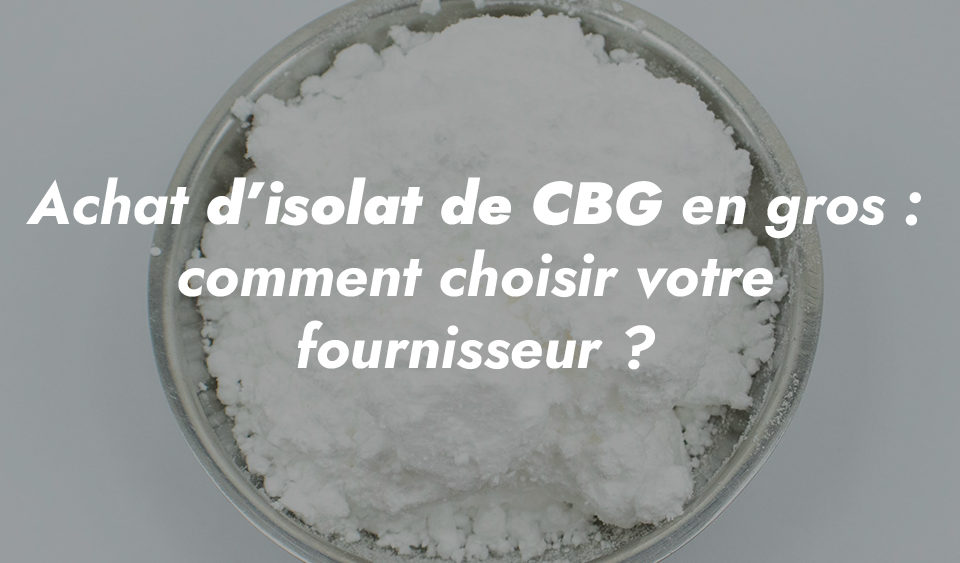
CBD, its properties for skin beauty (finally) recognized
February 15, 2021
The amazing story of CBD
March 10, 2021In chemistry, one letter changes everything. THCa and THC are not the same thing! We explain in detail how these two cannabinoids are different, yet intrinsically linked.
THCa: the precursor of THC
The title says it all - THCa and THC share much of their chemical structure for a reason! But let's rewind the biological process behind the synthesis of our cannabinoids.
Long before THC and THCa, there's CBGa. Its name probably doesn't mean much to you, yet it's the source of most cannabinoids. During flowering, the amount of CBGa increases, before breaking down into CBG, THCa and CBDa.
CBG is a cannabinoid we don't hear much about, yet certain studies tend to demonstrate its therapeutic effects. (We invite you to consult our article dedicated to CBG here.)
THCa and CBDa are then converted into THC and CBD respectively. THC, known for its psychotropic effects. And CBD, which is not a narcotic and is now sold over the counter in France. Finally, THCa is transformed into THC
🍁 CBGa > CBG + CBDa + THCa; then CBDa > CBD and THCa > THC
(And THC > CBN)
How does one go from one cannabinoid to another, chemically speaking? To do this, we need to understand decarboxylation.
Decarboxylation: from THCa to THC
Chemical substances modify their structure according to their environment. Molecules can lose or gain atoms.
Decarboxylation is simply what happens at the molecular level when cannabinoids are exposed to light and temperature. When this happens, they lose 2 carbonatoms and 1oxygenatom... hence the term: de-carb-oxy-lation. The cannabinoid is also said to change from its acid form to its neutral form.
In fact, THCa, with the formula C22H30O4, loses a molecule of CO2 and becomes C21H30O2, which is none other than our famous THC. If the flower is exposed to high temperatures or light for too long, THC undergoes a second chemical transformation and becomes CBN.
To find out more about CBN, read our article: What is CBN?
Please note that the percentage of THCa measured in trichome samples will never be equal to the percentage of THC after decarboxylation. THCa (358 gr/mol) degrades into THC (314 gr/mol), but don't forget CO2 (44 gr/mol)! To find out the THC content of THCa (314/358), use a coefficient of 0.877.
THCa: its effects on the body
While the effects of THC are well known to the general public, those of THCa are much less so. And that's a pity, because not only is it one of the cannabinoids most present in the plant, but the few studies carried out on its subject tend to attribute interesting therapeutic virtues to it:
Combined with other cannabinoids (including CBD, CBN and CBG), THCa is said to have an anti-inflammatory effect. According to this study, it is capable of acting on the production of prostaglandins, a substance involved in inflammation.
🧠
Some studies also highlight THCa's role in protecting the neurological system. The cannabinoid is in fact capable of acting on cell death.
👩⚕️
Finally, like CBD, THCa could prevent certain cancers.
In short, here's yet another cannabinoid that could one day revolutionize the world of medicine. In the meantime, all eyes are on CBD, the most studied cannabinoid of all.
The difference between THC and THCa: in a nutshell
So our two cannabinoids have very little in common. Except that THC is the neutral version, obtained after decarboxylation of THCa, the acid version. In other respects, they have nothing in common:
- THC is a narcotic in the eyes of the law in most countries. THCa, like CBD, is not a controlled substance.
- THC has psychotropic effects. THCa does not, and some studies show that it even has some beneficial properties.






